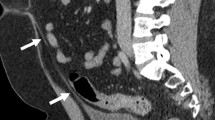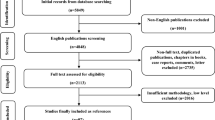Abstract
The objective of the study was the development of an abridged risk-stratified imaging algorithm for the management of children with unilateral ureteropelvic junction obstruction (UPJO). Data on timing, frequency and duration of diagnostic imaging in children with unilateral UPJO was extracted retrospectively. Based on these findings, an abridged imaging algorithm was developed without changing the intended management by the clinicians and the outcome of the individual patient. The potential reduction of imaging studies was analysed and stratified by risk and management groups. The reduction in imaging studies, seen for ultrasound (US) and functional imaging (FI), was 45% each. On average, this is equivalent to 3 US and 1 FI studies less for every patient within the study period. The change was more pronounced in the low-risk groups. Progression of UPJO never occurred after 2 years of age and all secondary surgeries were carried out until the age of 3.
Conclusions: Although our findings need to be validated by further prospective research, the developed imaging algorithm represents a risk-stratified approach towards less imaging studies in children with unilateral UPJO, and a follow-up beyond 3 years of age should be considered only in selected cases at the discretion of the clinician.
What is Known: • ultrasound and functional imaging represent an integral part of therapeutic decision-making in children with unilateral ureteropelvic junction obstruction • imaging studies cannot accurately assess which patients are in need of surgical intervention, therefore close, serial imaging is preferred |
What is New: • a new, risk-stratified imaging algorithm was developed for the first 3 years of life • applying this algorithm could lead to a considerable reduction of imaging studies, and also the associated risks and health-care costs |


Similar content being viewed by others
Abbreviations
- APRPD:
-
anterior-posterior renal pelvis diameter
- FI:
-
functional imaging
- MRU:
-
magnet resonance urography
- RS:
-
renal scintigraphy
- SRF:
-
split renal function
- UPJO:
-
unilateral ureteropelvic junction obstruction
- US:
-
ultrasound
- VCUG:
-
voiding cystourethrogram
- VUR:
-
vesicoureteral reflux
References
Caiulo VA, Caiulo S, Gargasole C, Chiriaco G, Latini G, Cataldi L, Mele G (2012) Ultrasound mass screening for congenital anomalies of the kidney and urinary tract. Pediatr Nephrol 27(6):949–953. doi:10.1007/s00467-011-2098-0
Nguyen HT, Benson CB, Bromley B, Campbell JB, Chow J, Coleman B, Cooper C, Crino J, Darge K, Herndon CD, Odibo AO, Somers MJ, Stein DR (2014) Multidisciplinary consensus on the classification of prenatal and postnatal urinary tract dilation (UTD classification system). J Pediatr Urol 10(6):982–998. doi:10.1016/j.jpurol.2014.10.002
Piepsz A (2011) Antenatal detection of Pelviureteric junction stenosis: main controversies. Semin Nucl Med 41(1):11–19. doi:10.1053/j.semnuclmed.2010.07.008
Beetz R, Bokenkamp A, Brandis M, Hoyer P, John U, Kemper MJ, Kirschstein M, Kuwertz-Broking E, Misselwitz J, Muller-Wiefel DE, Rascher W (2001) Diagnosis of congenital dilatation of the urinary tract. Consensus Group of the Pediatric Nephrology Working Society in cooperation with the pediatric urology working Group of the German Society of urology and with the pediatric urology working Society in the Germany Society of pediatric surgery. Urologe A 40(6):495–507 quiz 508-499
McCann ME, Soriano SG (2012) General anesthetics in pediatric anesthesia: influences on the developing brain. Curr Drug Targets 13(7):944–951
Fazel R, Krumholz HM, Wang YF, Ross JS, Chen J, Ting HH, Shah ND, Nasir K, Einstein AJ, Nallamothu BK (2009) Exposure to low-dose ionizing radiation from medical imaging procedures. New Engl J Med 361(9):849–857. doi:10.1056/NEJMoa0901249
Tekgül S, Dogan HS, Hoebeke P, Kocvara R, Nijman JM, Radmayr C, Stein R, Erdem E, Nambiar AK, Silay MS, Undre S (2016) Guidelines on paediatric urology, available at http://Uroweb.Org/Guideline/Paediatric-urology/. European Association of Urology
Conway JJ, Maizels M (1992) The "well tempered" diuretic renogram: a standard method to examine the asymptomatic neonate with hydronephrosis or hydroureteronephrosis. A report from combined meetings of the Society for Fetal Urology and members of the pediatric nuclear medicine council--the Society of Nuclear Medicine. J Nucl Med 33(11):2047–2051
Jones RA, Perez-Brayfield MR, Kirsch AJ, Grattan-Smith JD (2004) Renal transit time with MR urography in children. Radiology 233(1):41–50. doi:10.1148/radiol.2331031117
Nguyen HT, Herndon CD, Cooper C, Gatti J, Kirsch A, Kokorowski P, Lee R, Perez-Brayfield M, Metcalfe P, Yerkes E, Cendron M, Campbell JB (2010) The Society for Fetal Urology consensus statement on the evaluation and management of antenatal hydronephrosis. J Pediatr Urol 6(3):212–231. doi:10.1016/j.jpurol.2010.02.205
Perez-Brayfield MR, Kirsch AJ, Jones RA, Grattan-Smith JD (2003) A prospective study comparing ultrasound, nuclear scintigraphy and dynamic contrast enhanced magnetic resonance imaging in the evaluation of hydronephrosis. J Urol 170(4 Pt 1):1330–1334. doi:10.1097/01.ju.0000086775.66329.00
Sidhu G, Beyene J, Rosenblum ND (2006) Outcome of isolated antenatal hydronephrosis: a systematic review and meta-analysis. Pediatr Nephrol 21(2):218–224. doi:10.1007/s00467-005-2100-9
Gordon I, Dhillon HK, Peters AM (1991) Antenatal diagnosis of renal pelvic dilatation--the natural history of conservative management. Pediatr Radiol 21(4):272–273
Weitz M, Schmidt M, Laube G (2016) Primary non-surgical management of unilateral ureteropelvic junction obstruction in children: a systematic review. Pediatr Nephrol. doi:10.1007/s00467-016-3566-3
Furlow B (2011) Radiation protection in pediatric imaging. Radiol Technol 82(5):421–439
ICRP (2013) Radiological protection in paediatric diagnostic and interventional radiology. ICRP publication 121. Ann ICRP 42 (2)
Akhavan A, Shnorhavorian M, Garrison LP Jr, Merguerian PA (2014) Resource utilization and costs associated with the diagnostic evaluation of nonrefluxing primary hydronephrosis in infants. J Urol 192(3):919–924. doi:10.1016/j.juro.2014.03.110
Weitz M, Schmidt M (2016) To screen or not to screen for vesicoureteral reflux in children with ureteropelvic junction obstruction: a systematic review. Eur J Pediatr. doi:10.1007/s00431-016-2818-3
Riccabona M, Avni FE, Blickman JG, Dacher JN, Darge K, Lobo ML, Willi U (2008) Imaging recommendations in paediatric uroradiology: minutes of the ESPR workgroup session on urinary tract infection, fetal hydronephrosis, urinary tract ultrasonography and voiding cystourethrography, Barcelona, Spain, June 2007. Pediatr Radiol 38(2):138–145. doi:10.1007/s00247-007-0695-7
Dias CS, Silva JM, Pereira AK, Marino VS, Silva LA, Coelho AM, Costa FP, Quirino IG, Simoes ESAC, Oliveira EA (2013) Diagnostic accuracy of renal pelvic dilatation for detecting surgically managed ureteropelvic junction obstruction. J Urol 190(2):661–666. doi:10.1016/j.juro.2013.02.014
Subramaniam R, Kouriefs C, Dickson AP (1999) Antenatally detected pelvi-ureteric junction obstruction: concerns about conservative management. BJU Int 84(3):335–338
Hacker HW, Szavay P, Dittmann H, Haber HP, Fuchs J (2009) Pyeloplasty in children: is there a difference in patients with or without crossing lower pole vessel? Pediatr Surg Int 25(7):607–611. doi:10.1007/s00383-009-2385-z
Author information
Authors and Affiliations
Contributions
Maria Schmidt and Nadin Abadir participated in extraction and analysis of the data, and in writing of the article. Marcus Weitz participated in the design of the work, analysis and interpretation of the data and writing of the article. Guido Laube provided general advice on the manuscript and participated in writing of the article. All authors have read and approved the final version of the manuscript.
Corresponding author
Ethics declarations
Funding
No funding was received.
Conflict of interest
The authors declare that they have no conflict of interest.
Ethical approval
All procedures performed in studies involving human participants were in accordance with the ethical standards of the institutional and/or national research committee and with the 1964 Helsinki declaration and its later amendments or comparable ethical standards. The study was approved by the local ethics commissions.
Additional information
Communicated by Mario Bianchetti
Rights and permissions
About this article
Cite this article
Abadir, N., Schmidt, M., Laube, G.F. et al. Imaging in children with unilateral ureteropelvic junction obstruction: time to reduce investigations?. Eur J Pediatr 176, 1173–1179 (2017). https://doi.org/10.1007/s00431-017-2966-0
Received:
Revised:
Accepted:
Published:
Issue Date:
DOI: https://doi.org/10.1007/s00431-017-2966-0




